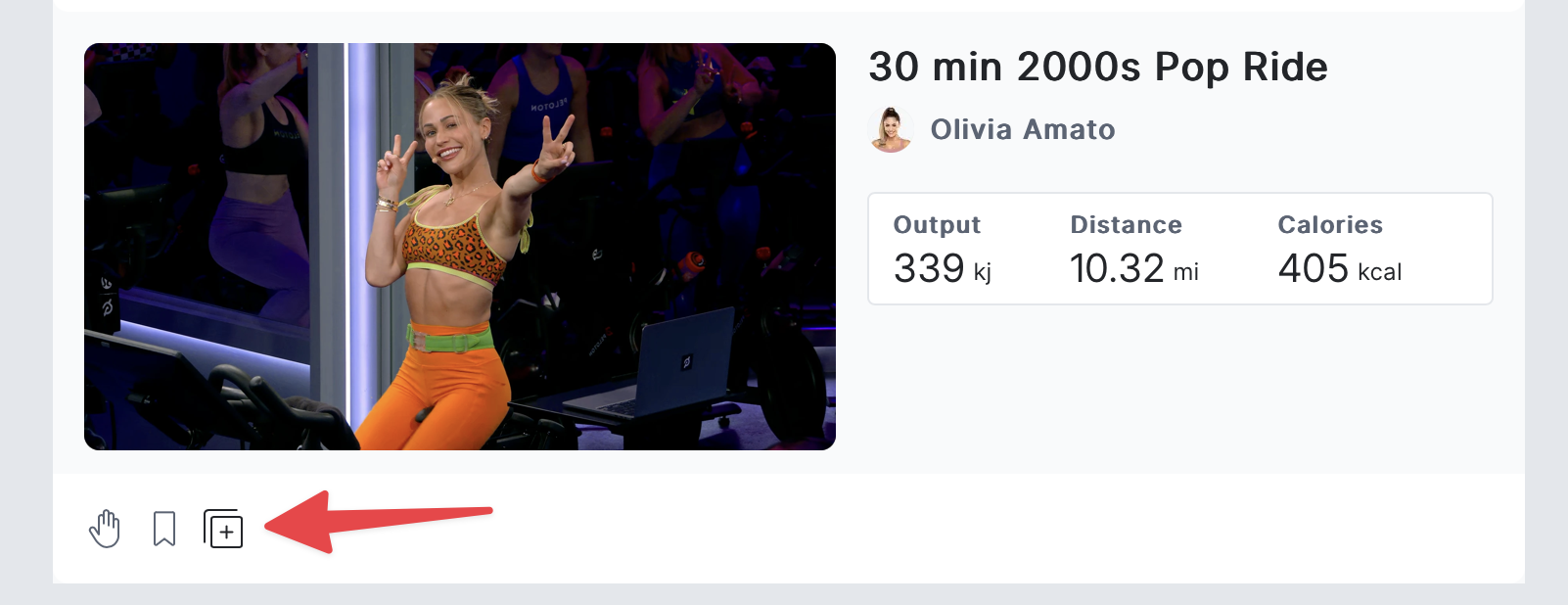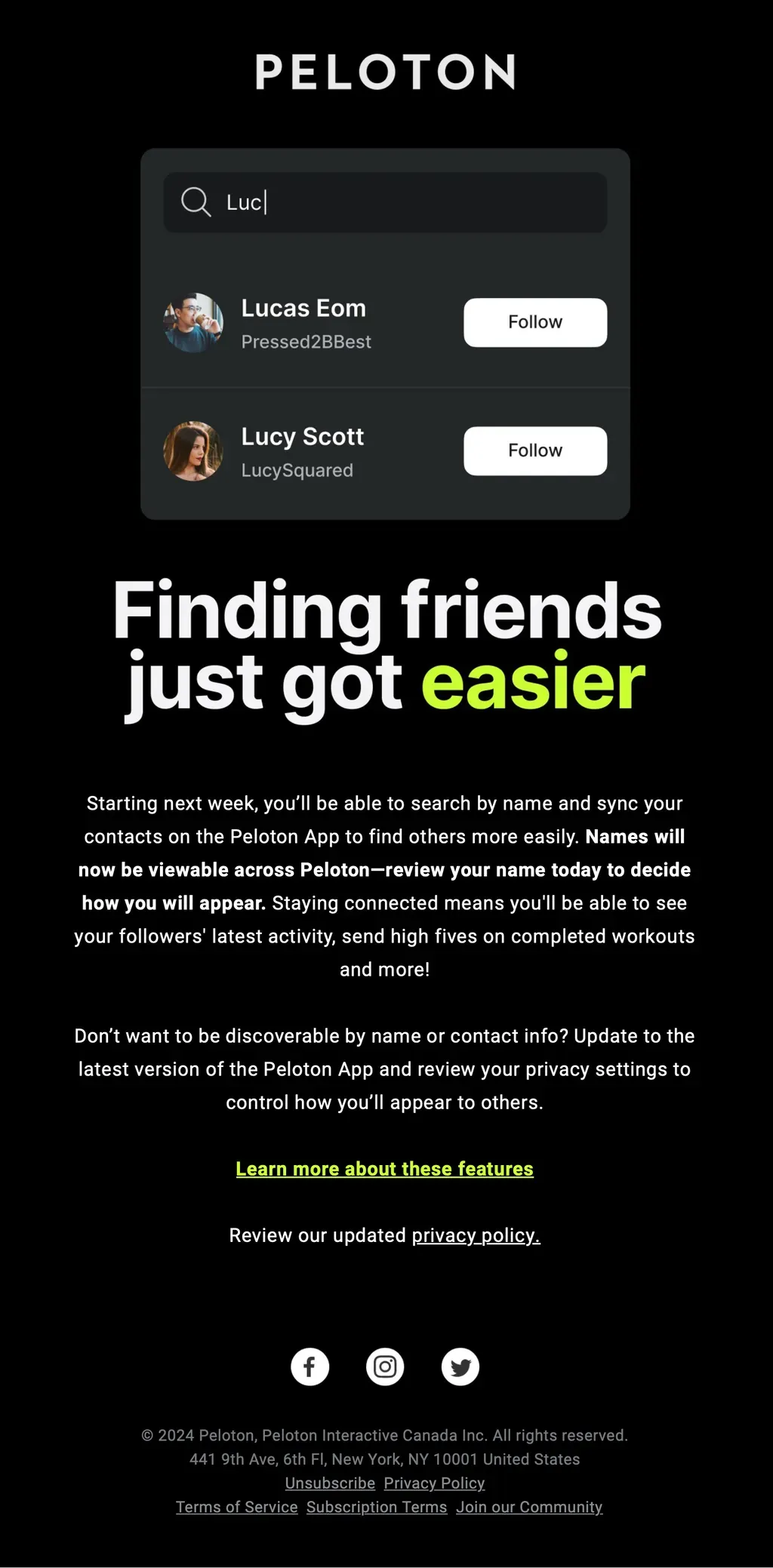I'm going to start this post out with a caveat. I love my Peloton. It is overly expensive? Yes. Were the early days of the company cult like? Yes. Have they made some serious business mistakes? Absolutely.
But, my participation on the platform—using the Bike+, Guide, and the app—has helped me to build and maintain a consistent training habit. The 7,000+ activities (workouts and meditations) I've completed during my current 1,300 day streak have helped me find myself again in my late 40's.
It's working for me and I enjoy using this platform. What's not working for me? The way the company is rolling out its latest feature.
What happened?
Peloton is currently rolling out a change to user profiles. It's a deceivingly simple change, your first and last name are now public. By default.
As best as I can tell, this is the first time this will be the case since the company launched in 2012. The information is still optional. You don't have to enter your name in your profile.
Thankfully, your platform profile is different than your billing profile.
You can choose to opt-out...sort of.
Peloton decided to combine the visibility of your username and real name into one search setting. When you follow the company's guidance to stop your name from showing up, this is the way the decision is framed:

It's subtle, but this is a major change. If you select, "Hide me from search" you are now losing functionality. This feature is forcing you to pick either your privacy or allowing your friends and others to find you.
The undocumented solution here is to simple remove your first and last name from your profile. For now, they are not required and this won't impact your use the platform.
That's how you actually opt-out of this new behaviour.
- Remove your first and last name ➡️ opt-out
- Check, "Hide me from search" ➡️ lose functionality
Remember to save these changes after you've made them.
Needless stumble
The frustrating thing is that—up until now—the company has done a reasonably good job of providing users with choices about how they show up on the platform.
You've been able to connect your Peloton account to your Facebook account for at least the last eight years. That lets you post your rides to your Facebook page and allow people to connect with you on that platform.
As you would expect/hope, Peloton has also added connectivity to other exercise platforms over the years. Every one of these has been and continues to be opt-in. You are in control if you make those connections or not.
They've even added the ability—Peloton Playlist—to connect to your Apple Music or Spotify account. This allows you to "like" a song that is playing during a workout and have that song saved to a playlist in your music service. Again, this is an opt-in connection.
Two years ago, the company launched a "feed" feature. This expanded how you interact with connections on the Peloton platform. Previously, you could manually go to a users profile to see their activity or you could use your connection to a user—if they are following you or if you are following them—as a filter on the in-class leaderboard. Making it easy to "high five" your connections to encourage them and recognize their work.
The feed is a streamlined way to see what your connections are up to.

Each entry in the feed also makes it easy to either bookmark that activity or immediately add it to your "stack". The stack is essentially your current workout queue.
The feed was rolled out for everyone, but it respected the existing privacy preferences in your profile. Up until now, Peloton did a good job of expanding the ability to connect on its platform while balancing user privacy.
Marketing spin
Here's the email I got on May 9th, 2024 about the profile privacy changes. The subject line was, ""We’re making it easier to find friends":

One of my problems with this email is the direct statement, "Names will now be viewable across Peloton—review your name today to decide how you will appear." That language is clear that this is happening. This is not an opt-in change.
Product managers, marketing folks, and sales teams will argue that if the feature was opt-in—a/k/a I choose to enable this feature—most people wouldn't. My response is and always has been, "That should tell you something then!"
At the same time, the company is also rolling out contact syncing. This frustrating overreach is a common tactic to expand network connections on platforms. This is again an opt-out feature for Peloton.
Thankfully, mobile operating systems require explicit, per-app permission from users before an app can access their contacts.
Peloton has added an additional privacy control for users that will allow you to hide yourself when another user syncs their contacts and you are listed. You can find that option in your profile as well. By default, this is unchecked. If you decide to opt-out by checking the box, remember to save your changes.

Wrapping all of this up as, "making it easier to find friends" is disingenuous. It's classic marketing spin and completely ignores a significant change to how the platform handles your data.
The platform has enabled connections for years without exposing actual names. The usernames and tags people use allow them to present themselves how they prefer.
There's an easier way
If you're making a change to your system that will impact how personal data is handled, be open about it.
Unless there's a legal requirement or an unassailable reason, make any such feature opt-in.
Even though opt-in features typically have lower adoption rates—which should tell you something about your feature—you can always turn the setting on for new customers.
Why would this work? Because a new and clear expectation is set for a new customer. As they are creating their profile, they see that this is the way the platform works and can make an informed choice.
The approach that Peloton is currently taking is making the user choose to lose functionality or remove data. It's on them to maintain the safe, more private situation they were in yesterday.
That's the wrong way to roll out new features. Peloton is breaking the trust it's built for little-to-no upside for the users or for their business. Trust takes a long time to build, and this approach can break that trust in an instant.




